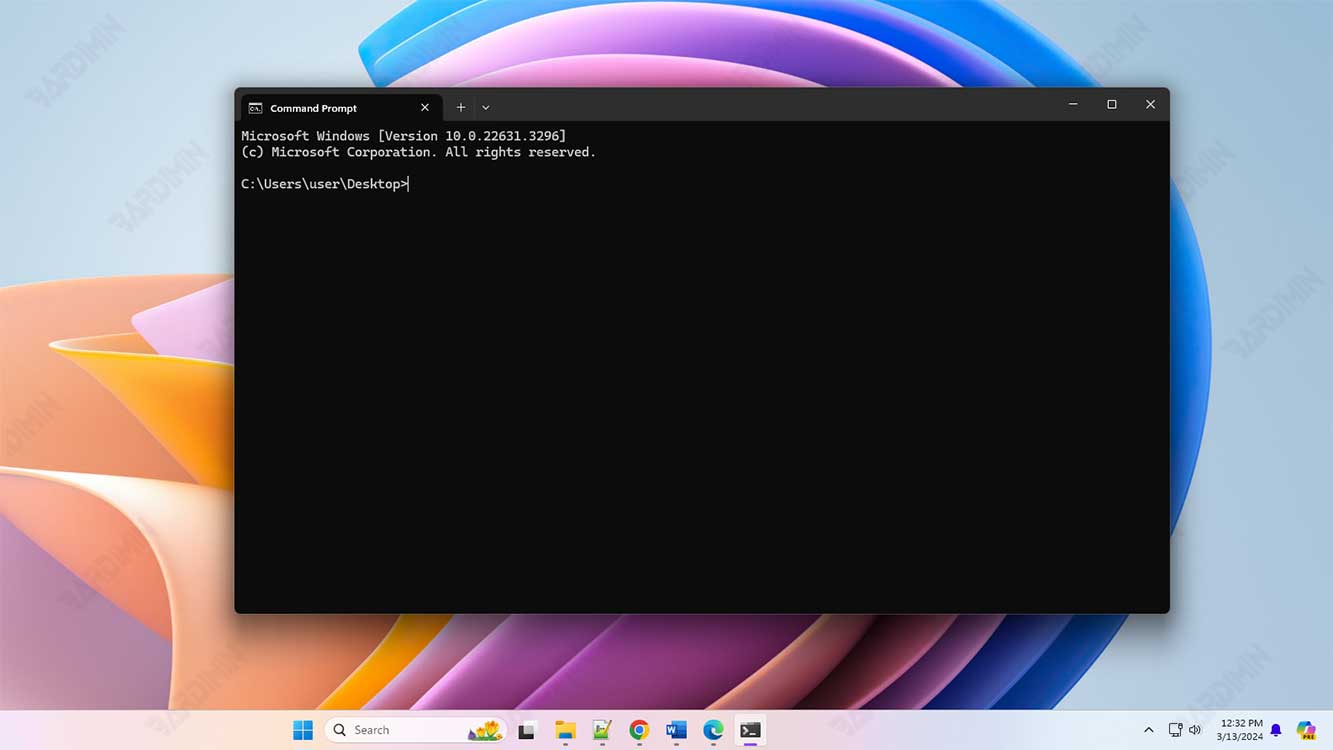Have you ever encountered a situation where Command Prompt or CMD suddenly pops up and disappears on your Windows 11 computer? This can be very distracting, especially when you’re working on something important.
Imagine you’re engrossed in work or gaming on your Windows 11 computer, and suddenly, without warning, a black window pops up and disappears in an instant. It was Command Prompt or CMD, and for some, it can be a disturbing and confusing experience. What causes this phenomenon? Is it a virus, a system error, or something more serious?
This sudden CMD problem is not just a visual distraction; it could be an indicator of a deeper problem in your operating system. In some cases, this may be a sign of unwanted activity, such as malware attempting to run scripts or unstable applications attempting to perform operations without your permission.

This Bardimin article will take you through the common causes of this problem and provide step-by-step solutions to solve it. So, let’s start the journey to restore peace and control over your Windows 11 computer.
Common Causes of CMD Present Themselves
Some common causes that can make CMD appear suddenly include:
Windows Task Scheduling
Sometimes, tasks scheduled in the Task Scheduler can cause CMD to appear. Some programs may require access to Command Prompt to run certain processes. This usually happens after the computer has finished booting and enters the main screen. CMD may appear only for a few seconds and then disappear on its own. This is nothing to worry about and is quite natural, especially if your device’s specifications are mediocre
Malware Infections
Malware or adware can cause CMD windows to appear randomly. Virus or malware infections are another serious cause that can make CMD appear randomly. If CMD appears because of a virus, you may also see other applications open on their own or the presence of programs you don’t install appear. This indicates that your device may have been infected and requires immediate cleaning
Configuration Error
Misconfigurations in the system or application can cause CMD to appear unexpectedly. This can include everything from missettings to damage to system files. When an error occurs, CMDs may appear in large numbers and may interfere with device operation. In such cases, actions such as forcibly shutting down the device may be required if it cannot shut down through normal means
Steps to Overcome CMD That Keeps Emerging
Here are some solutions you can try to solve this problem:
Inspect and Reconfigure Task Scheduler
To check Task Scheduler in Windows 11 and determine if it’s the cause of the sudden appearance of Command Prompt (CMD), you can follow these steps:
- Open Task Scheduler:
- Press the Win + R button to open the Run dialog.
- Type taskschd.msc and press Enter. This will open a window Task Scheduler.
- Navigation in Task Scheduler:
- In the Task Scheduler window, expand Task Scheduler Library in the left pane.
- Select the folder where you have the scheduled task you want to check.
- Check Scheduled Tasks:
- In the middle pane, you’ll see a list of scheduled tasks.
- Right-click on a suspicious or unfamiliar task and select Properties.
- Check the Actions tab to see what the task does.
- Disable or Delete Task:
- If you find an unwanted or suspicious task, you can disable it by right-clicking and selecting Disable.
- To delete a task, select Delete.
- Check for Changes:
- After making changes, monitor to see if the CMD still appears.
By checking Task Scheduler, you can identify and address tasks that might cause CMD to appear automatically. If the problem persists, there may be other causes that need to be addressed, such as a malware infection or system error.

